You can contact LEARNZ, part of CORE Education, at:
Postal Address:
PO Box 13 678,
Christchurch 8141,
New Zealand
Your mission for today was to find out more about how water is managed on the Memorial Park construction site. Karly Shields, a Civil Engineer met with you to take you back down into the trench.
In some parts of the trench which are still being excavated you could see water. Karly explained that some of this water is just stormwater. Stormwater is rainwater that flows across the ground and does not get absorbed into the soil. It flows into stormwater pipes and streams, and from there into the sea. Stormwater can cause flooding, and can be harmful to the natural environment if it picks up pollutants and carries them into waterways. Stormwater is different to wastewater, which is water that carries waste away from homes and businesses. Water from the trench is treated on site. You saw where this water is collected and pumped to the treatment unit. The treatment unit is where water sits until sediment or dirt can settle to the bottom and be removed.
Karly had a little experiment to show you how sediment settles. When dirty water is left to sit undisturbed the heavier particles sink to the bottom and then clean water can be poured off the top. You then added dirt to a jar of clean water and shook it. The water quickly turned brown, but as soon as you stopped shaking the jar the dirt or sediment started to sink. The treatment unit works on this principle.
The pH scale is used to show how acidic or basic (alkaline) something is and is measured from 0 to 14. Clean water is neutral which means it is neither acidic nor basic and has a pH of 7. On the Memorial Park construction site lots of concrete is being poured and if this comes in to contact with water it can increase its pH above 7. Before this water can be released off the site it needs to be treated with carbon dioxide to bring the pH back to 7. When carbon dioxide combines with water it forms a weak carbonic acid which neutralises alkaline water. You watched as the water was tested with litmus paper and the pH was 11 so carbon dioxide from big tanks was bubbled through the water. You can find out more on the video.
After talking to Karly you headed to Clifton Terrace Model School to find out what they thought of the Memorial Park project and return their ambassador Kowhai Kea. The students welcomed you with a beautiful waiata and took part in our first audioconference for the day. It was fantastic to speak with the students in their classroom rather than over the phone. They showed you a scale-model of the Memorial Park underpass that they had built. You heard the students talk about what they thought the Memorial Park would be like and how they were looking forward to being able to use it. You can watch the video about this.
You said goodbye to Clifton Terrace Model School and headed across town to the construction site. Michelle Knappstein had promised to take you on site again for the last time. Michelle is also a Civil Engineer and part of her job is monitoring and managing groundwater. Groundwater is the water beneath the ground’s surface. This water is rain water that filters down into the soil and the level of this water changes. Michelle explained that groundwater naturally flowed through this area before construction started but when a trench and wall were created it changed where groundwater could flow. Groundwater in the trench needs to be pumped out as it can flow to the surface. In other areas water is added to stop the ground cracking and buildings settling down. It was interesting to see where water was being added around the old Police Barracks historic building to protect it from settlement. You can watch the video to see how groundwater is monitored.
Wanganui Intermediate School took part in our last audioconference with Cole Meiring and asked interesting questions. You can listen to this audioconference to find out more.
You have enjoyed three stunning, hot days in the capital this week and discovered so much about how the trench for the Buckle Street underpass is being built. Don’t forget to join us again next year when we return to Wellington to follow the construction of the tunnel and later the park above.
See you next time,
Shelley, the LEARNZ field trip teacher.
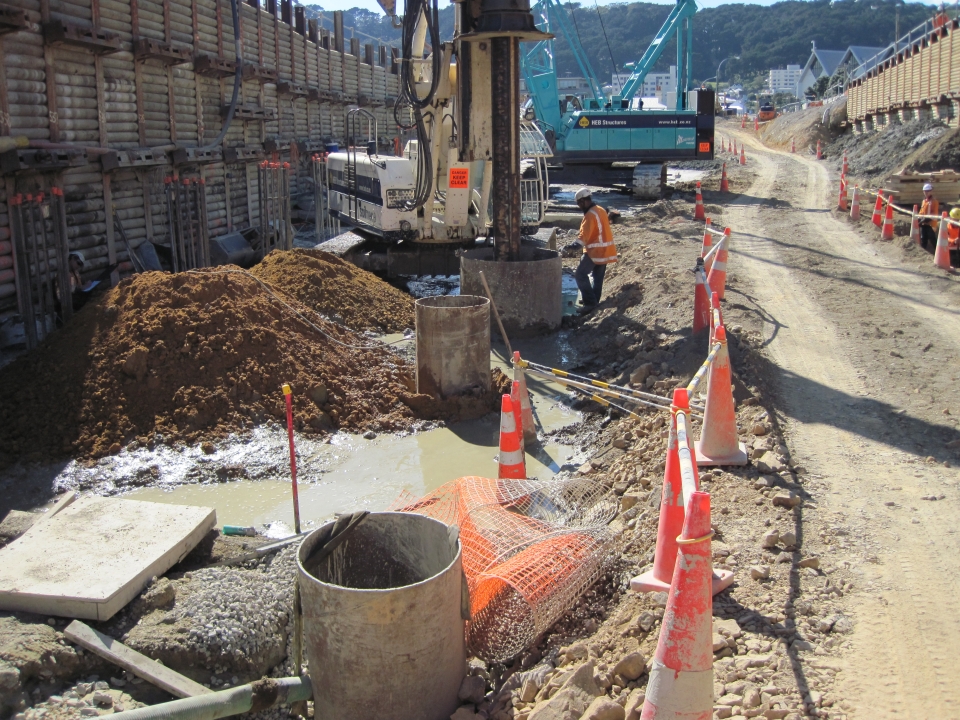
Water that collects in the trench is pumped out and treated. The pump is inside the large pipe you can see in the foreground. Image: LEARNZ.
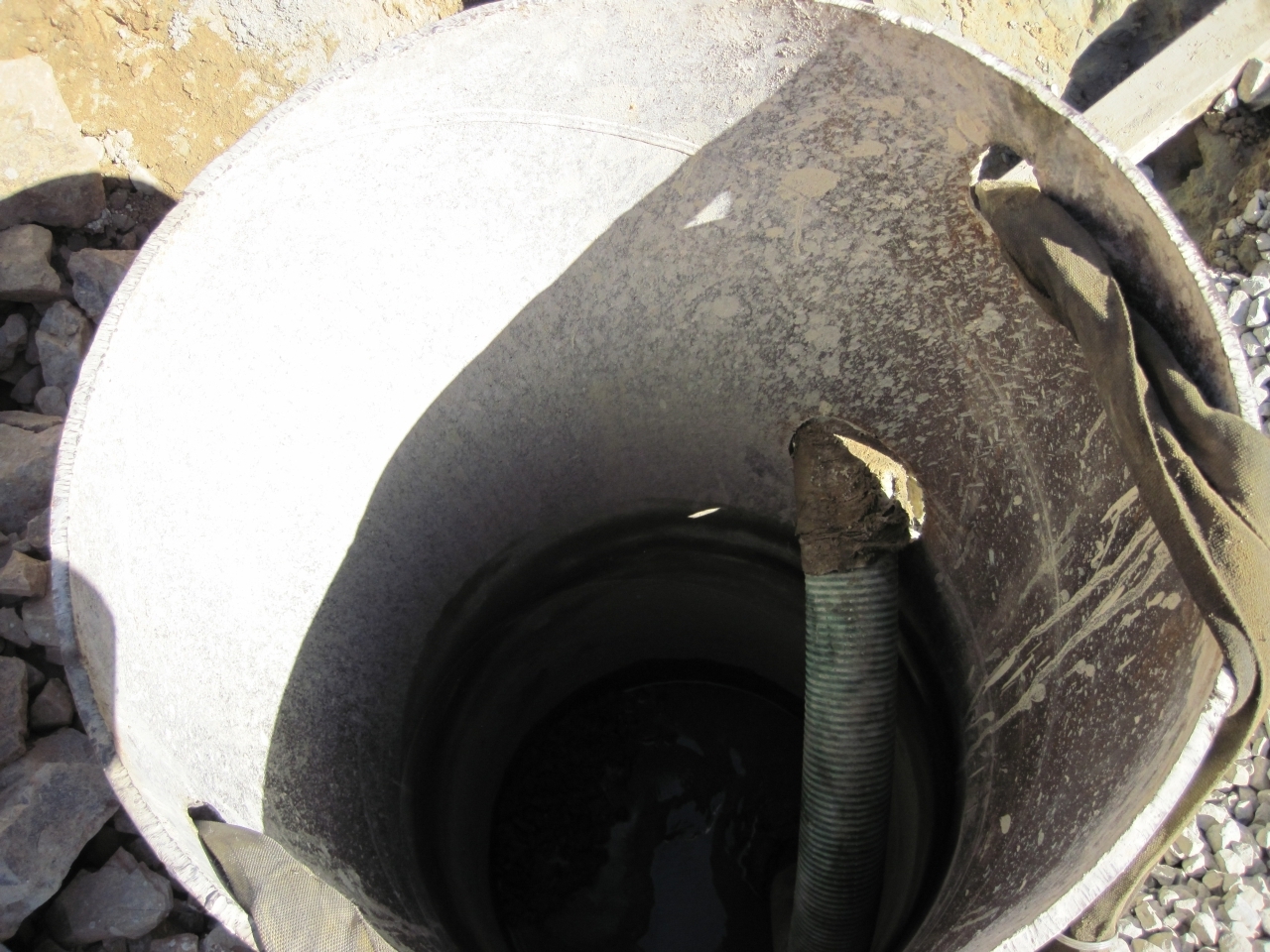
A pump inside this pipe pumps stormwater from the base of the trench into the treatment unit. Image: LEARNZ.
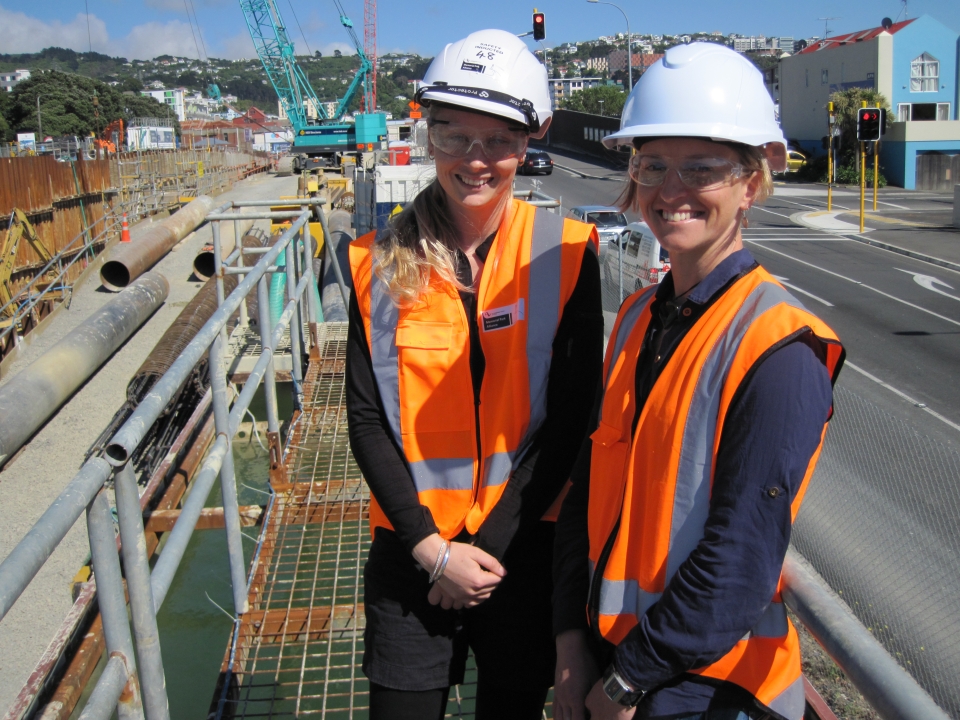
Karly Shields and Shelley stand on top of the sediment treatment unit. Can you see the water below them? Image: LEARNZ.
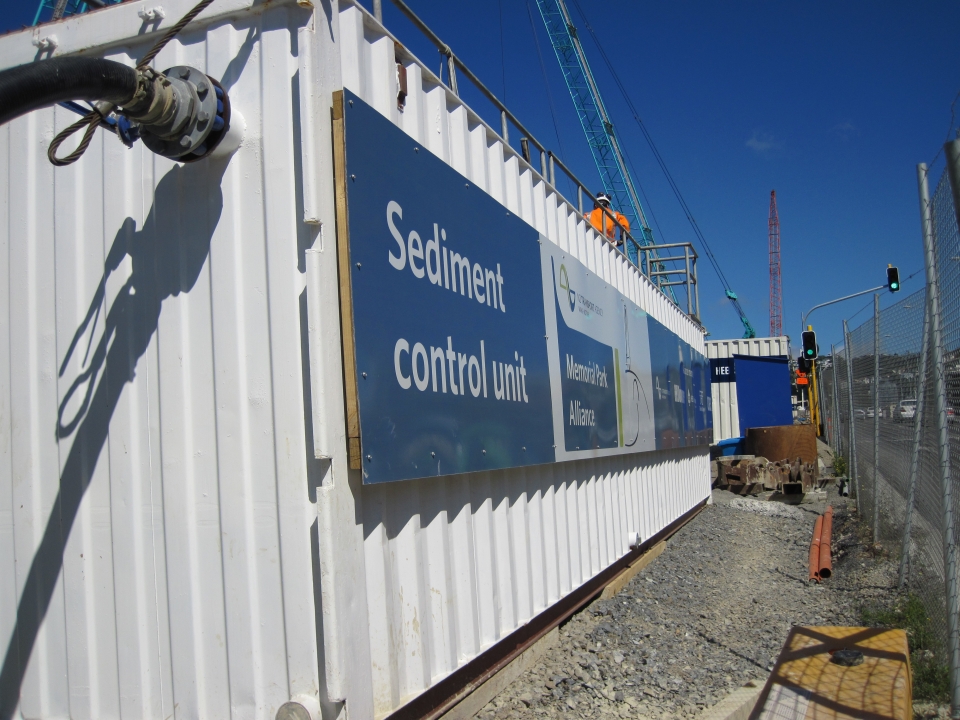
There are several sediment treatment units on site to treat water by removing sediment and balancing the pH (acidity). Image: LEARNZ.
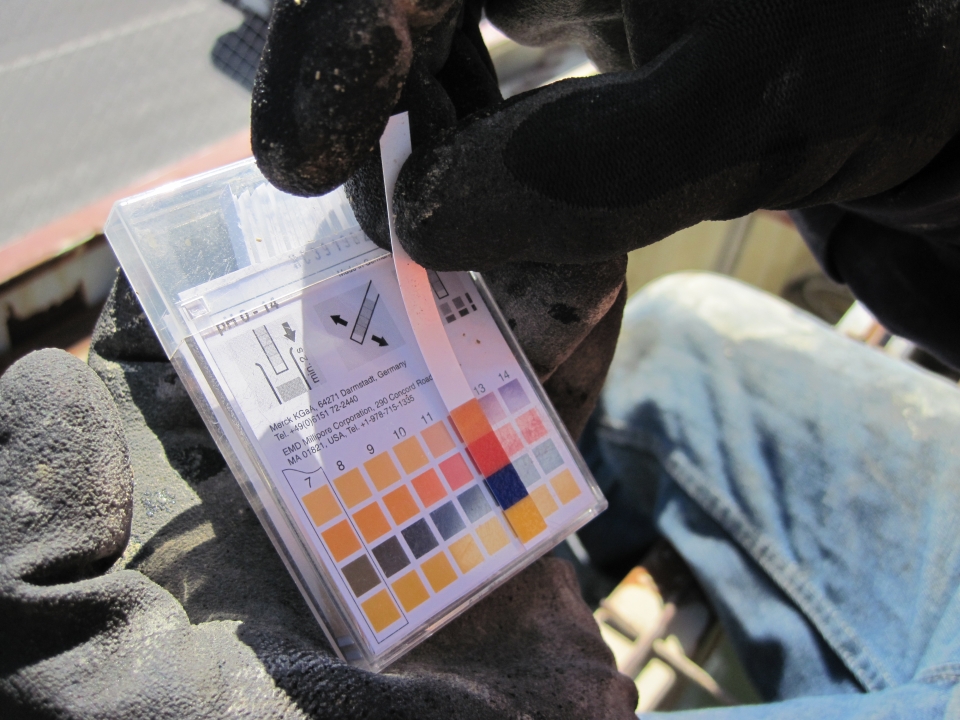
Litmus paper is used to test the water's acidity. This water has a pH of 11 so carbon dioxide will be added to bring the pH back to 7. Image: LEARNZ.
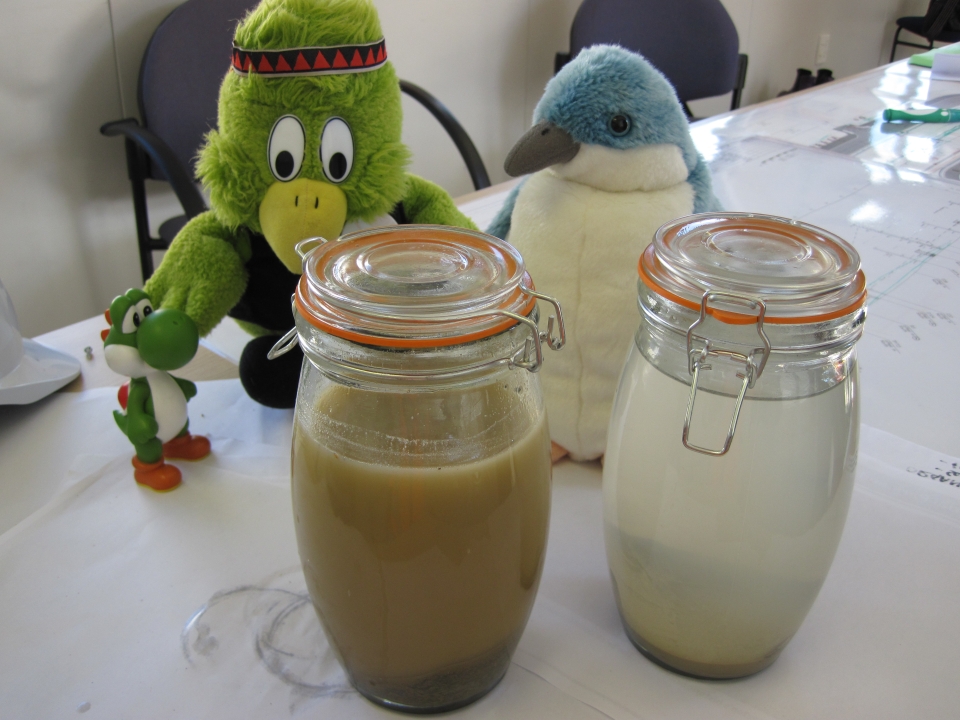
The ambassadors check out a sediment experiment to see how sediment can settle out and be removed to leave clean water. Image: LEARNZ.

The children from Kowhai home group at Clifton Terrace Model School welcome you with a waiata. Image: LEARNZ.
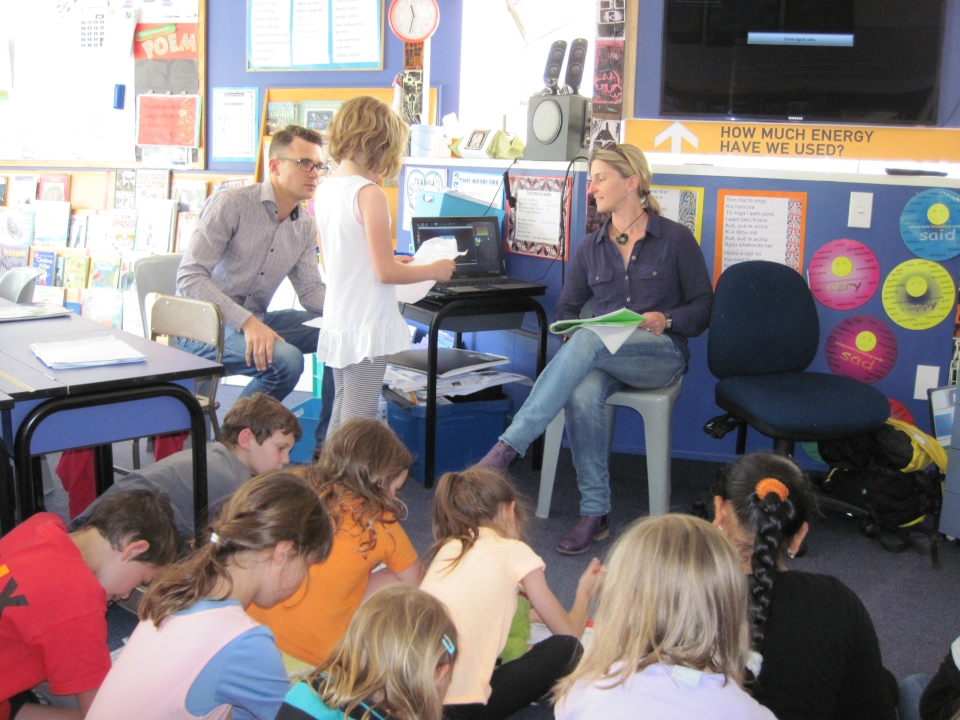
Cole and Shelley talk to students from Clifton Terrace Model School during the audioconference. Image: LEARNZ.
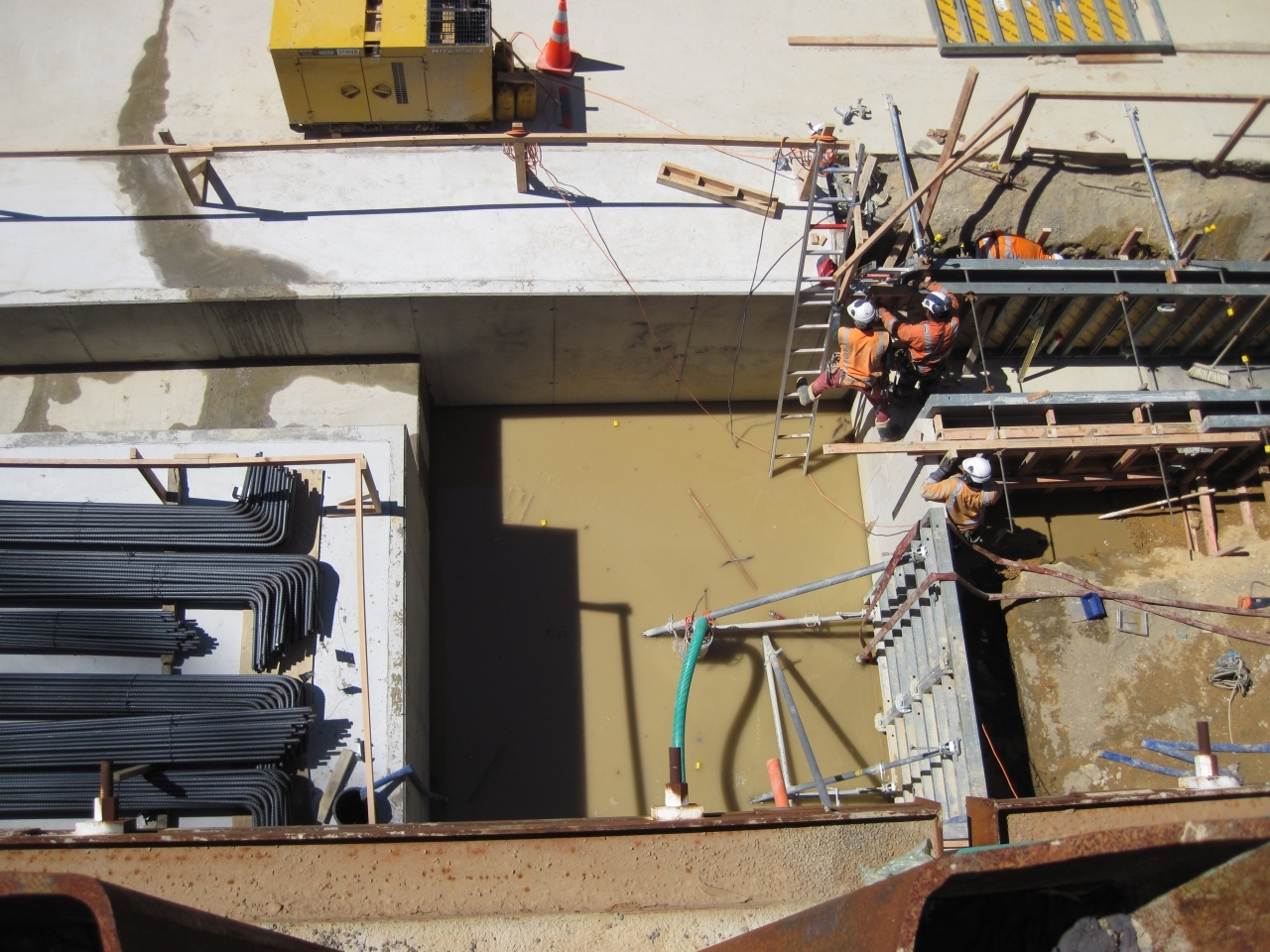
A catchment area in the trench is used to drain water into pipes so it can be removed. Image: LEARNZ.
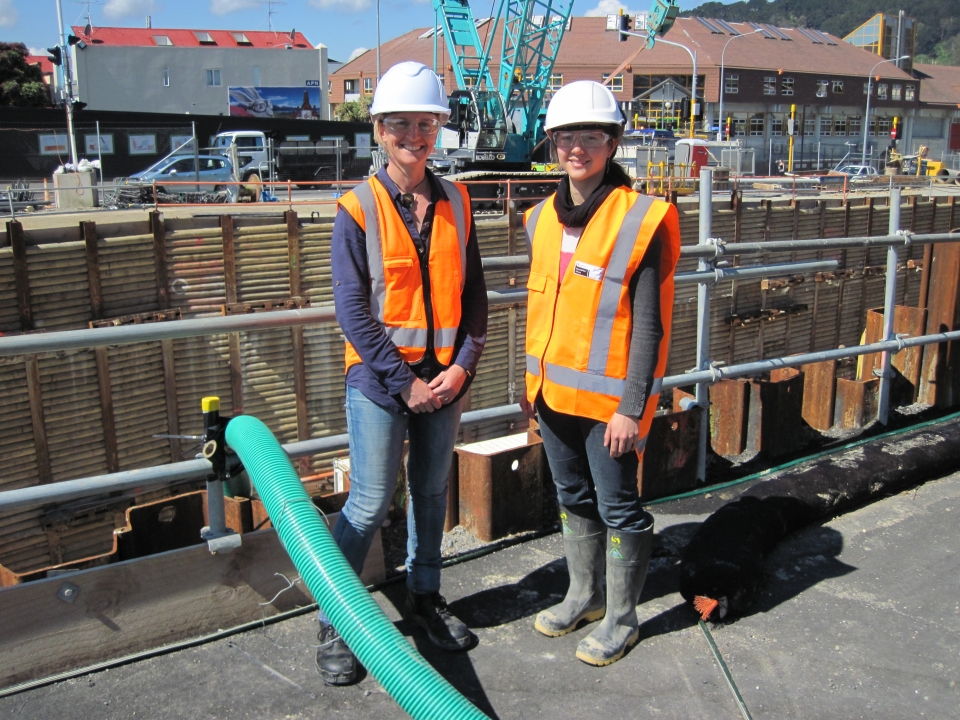
Shelley and Michelle Knappstein stand above the southern end of the trench where water is being pumped out of the trench through the green hoses. Image: LEARNZ.